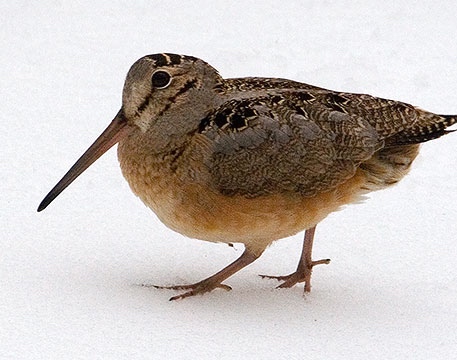 I'll never forget hearing a woodcock for the first time. It was over 20 years ago, early spring with lots of snow, and one chilly evening around dusk I heard this odd, metallic nasal sound, over and over at a lazy interval. Insect? Amphibian? I was totally perplexed by what would be out in these conditions.
It turned out to be a woodcock that had staked out bare ground beneath a heavily limbed pine. The "peent" I heard is the beginning of their mating ritual, wherein the males walk about, making this distinct call, and then launch into the air, circling higher and higher and then plummeting to the ground. The aerial display is accompanied by all sorts of whistles and burbling.
Listen for woodcock at dawn and dusk in larger overgrown yard edges and open fields. They use their long bills to probe for earthworms, and their legs are short, so they need ground that is not too densely vegetated (or snow covered, or frozen). At ACT, we manage some of our land for woodcock by cutting back heavy shrub growth.
|